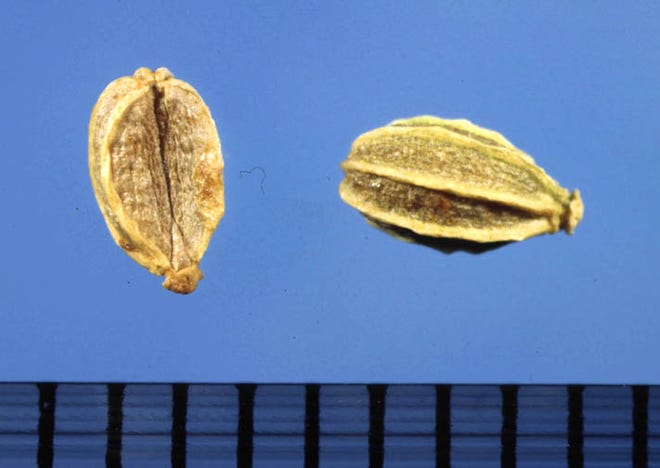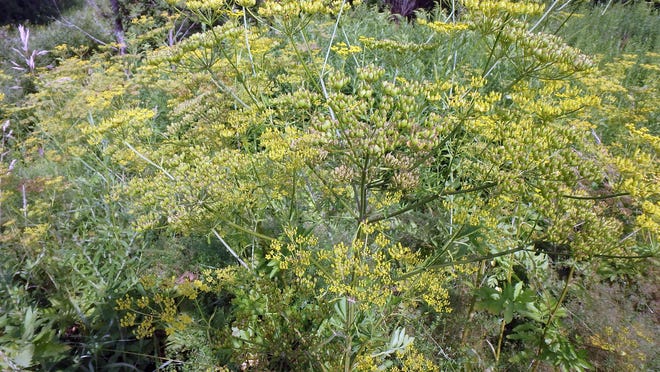You've met COVID-19 and the cicadas. Don't forget about poison hemlock and wild parsnip
We've gotten our COVID-19 vaccines, worn our masks during the current pandemic and are aware of the challenges of cicadas.
But officials are reminding Ohioans to be aware of a problem that could end with deadly consequences - poison hemlock.
The plants are reported to be abundant around the state.
"Both are commonly found growing together in Ohio," said professors Joe Boggs and Erik Draper, in The Ohio State University's Buckeye Yard & Garden online blog.
According to Boggs, poison hemlock and wild parsnip, which closely follow it, ha been identified as a bigger problem in Ohio in the past ten years.
"We have no exact idea why this has become a bigger problem," Boggs said. "Everything is just speculation."
He added that poison hemlock and wild parsnip can be found in various places, from fields to backyard gardens.

Why poison hemlock is so dangerous?
The plant can be deadly if eaten or if it gets in your eyes, Boggs and Draper added, in the blog.
"Poison hemlock is one of the deadliest plants in North America," they wrote. "Plants contain highly toxic piperidine alkaloid compounds, including coniine and gamma-coniceine, which cause respiratory failure and death in mammals. The roots are more toxic than the leaves and stems; however, all parts of the plant including the seeds should be considered dangerous."
Boggs said people shouldn't be scared to go outside, just be aware of precautions.

Don't confuse poison hemlock with wild parsnip
Boggs said poison hemlock, which has white flowers, is dangerous if you eat it or gets in your eyes, but isn't a problem if you touch it. On the other hand, wild parsnip, which has small yellow flowers that look like an umbrella, can cause blisters if you touch it.
Boggs said people who get blisters should seek medical attention.
"If you're out weed eating, you should wear splash-proof goggles and maybe a face shield because you don't want that juice getting on your lips or in your eyes," Ohio State University Extension agent for Crawford County Jason Hartschuh said.
"Given the risks posed by poison hemlock and wild parsnip, you are best using herbicides (for weed eating)," Boggs said.

What does poison hemlock look like?
Officials say the flowers have tiny white flowers that often grow in clusters.
Josh Dyer, director of the Crawford Park District, said the stalk of the poison hemlock is purple.
"It’s a dead giveaway," Dyer said.

Why poison hemlock is a concern for farmers with livestock
"Most of the time livestock are smart enough to not eat it," Hartschuh said. "Where we get into trouble is if we get a drought and everything else goes dormant and that's the only thing still green, they'll eat it."
In addition, officials say that farmers should be concerned about poison hemlock in hayfields and cited how animals can become sick the plant makes it into their bales of hay.
Mansfield News Journal reporter Zach Tuggle and USA TODAY contributed to this story